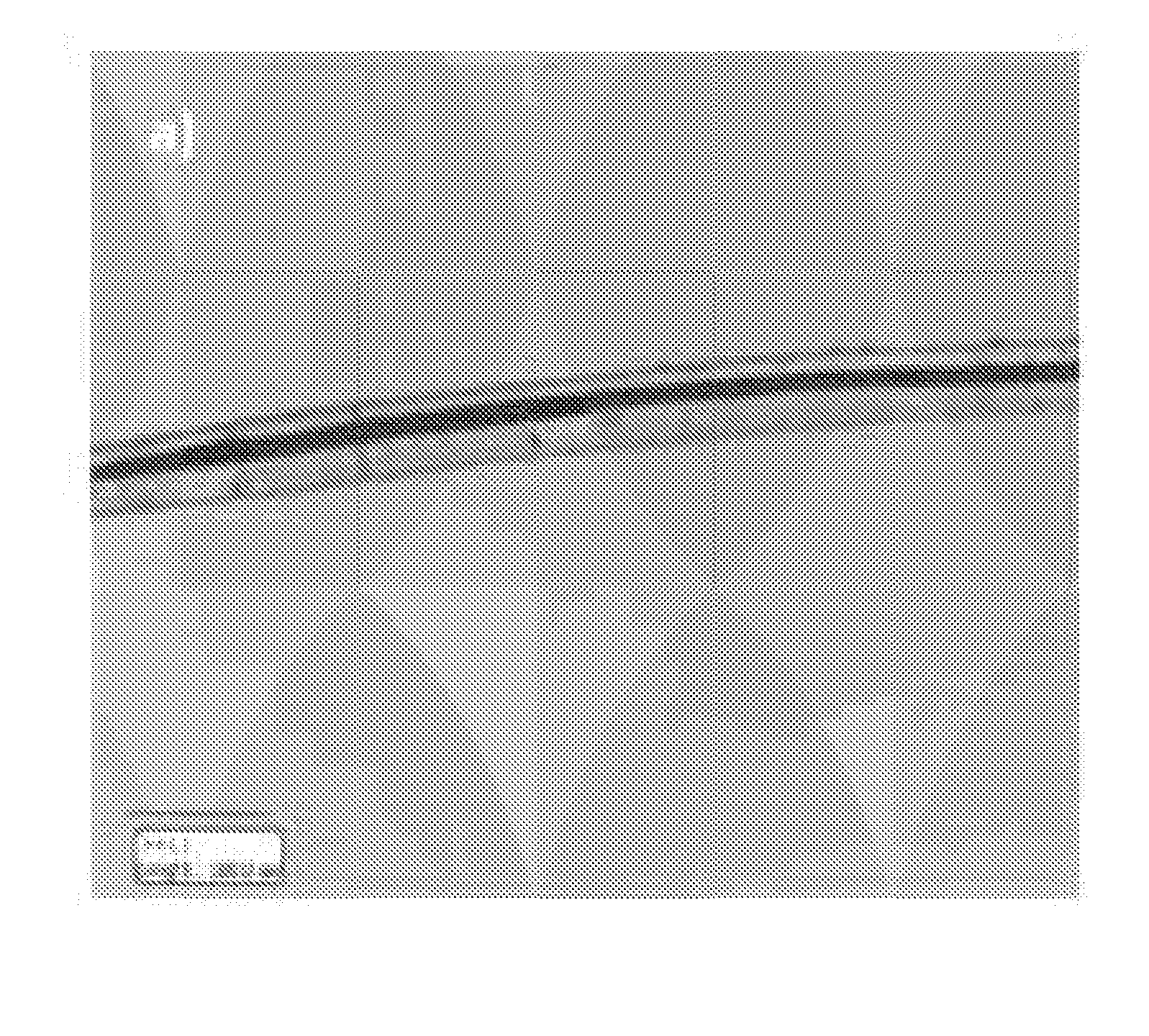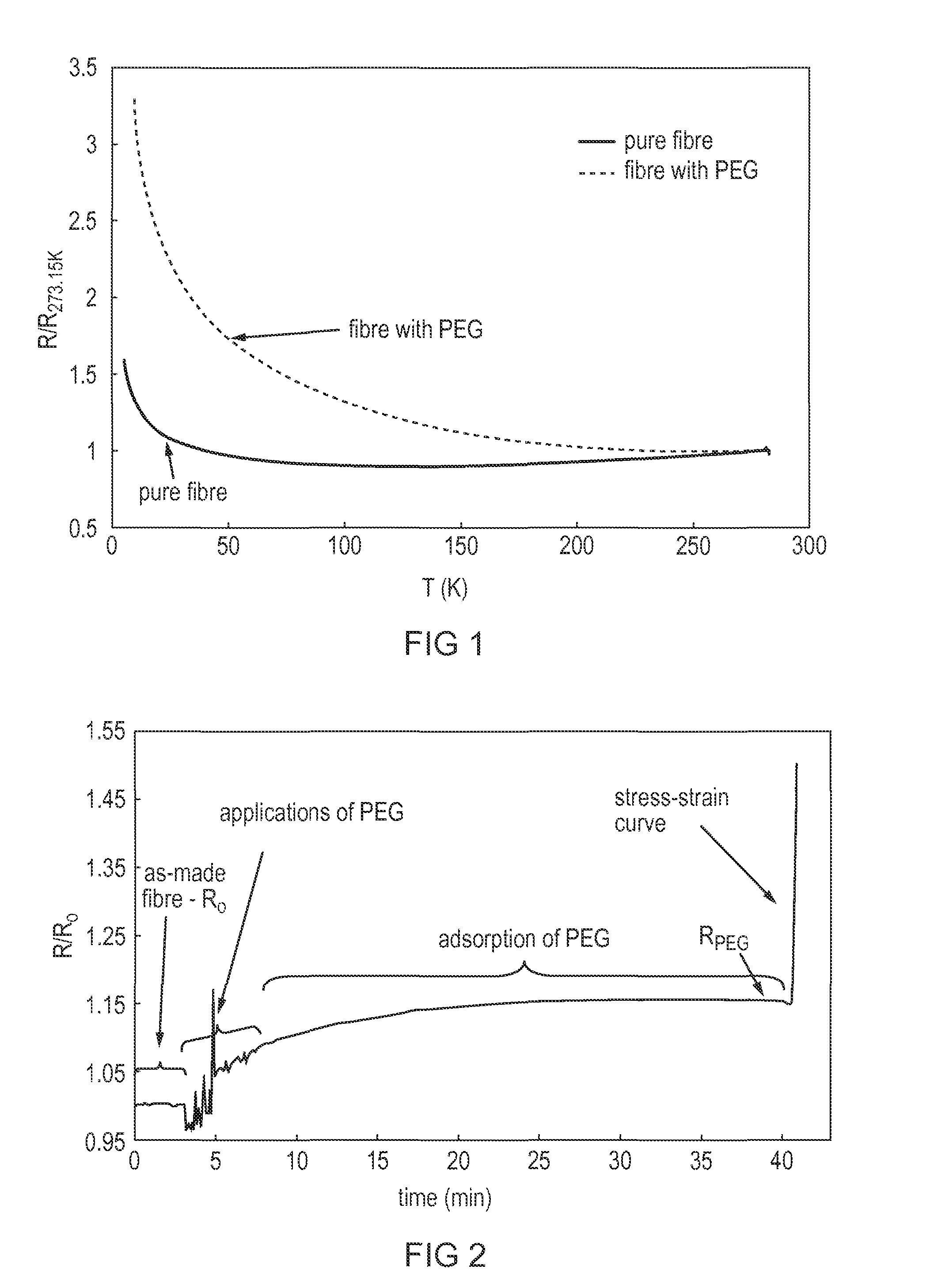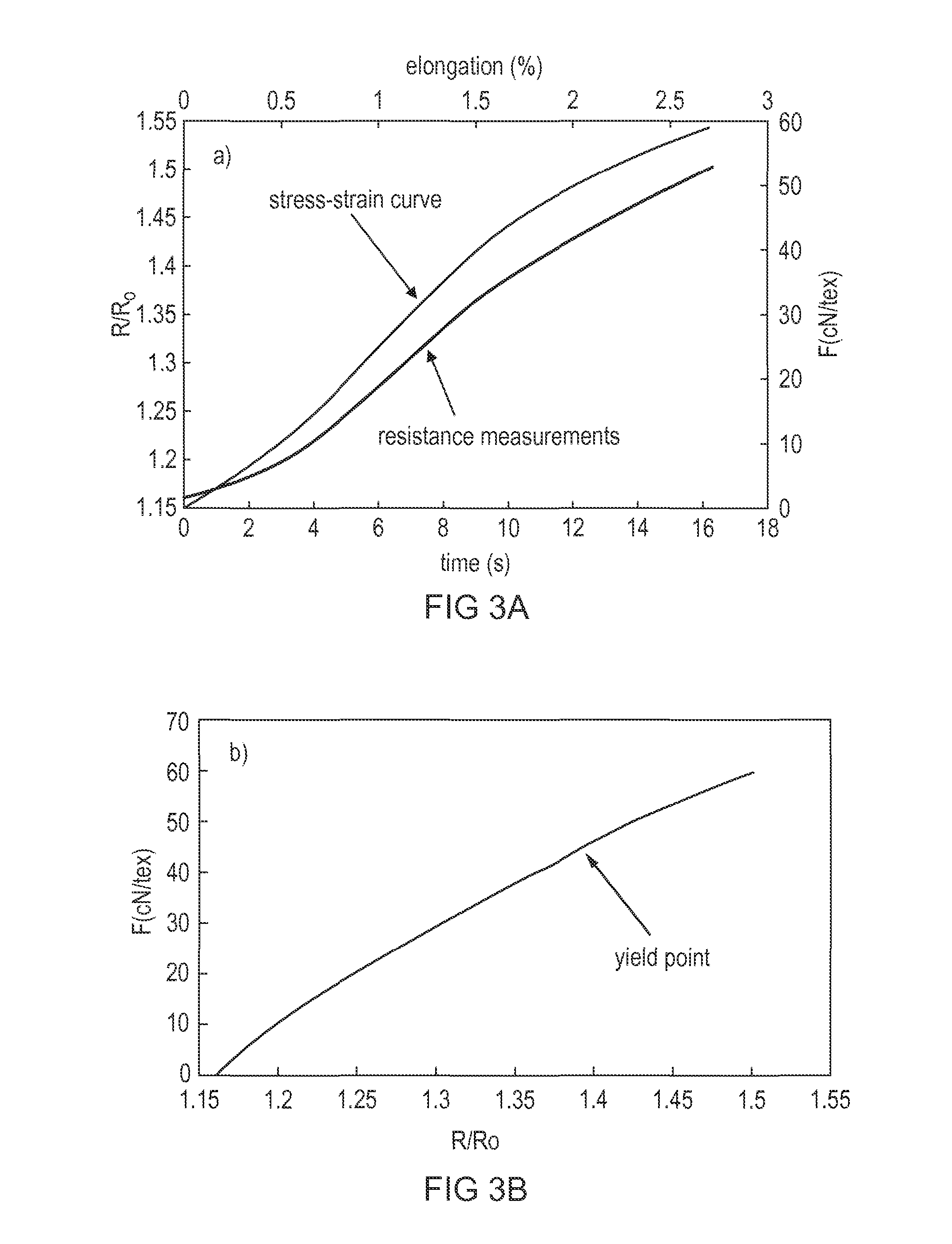Materials and Methods for Insulation of Conducting Fibres, and Insulated Products
a technology of conducting fibres and materials, applied in the direction of insulating conductors/cables, cables, insulated conductors, etc., can solve the problems of not being able to make suitable methods for insulating carbon nanotube wires, unable not being able to meet the requirements of insulation, etc., to achieve the effect of reducing conductivity and affecting the conductivity of fibres
- Summary
- Abstract
- Description
- Claims
- Application Information
AI Technical Summary
Benefits of technology
Problems solved by technology
Method used
Image
Examples
example 1
Silicone Paste Insulation
[0272]The inventors have found that electrical and mechanical properties are not significantly deteriorated when silicone paste is used to coat a carbon nanotube fibre.
[0273]Commercially available silicone adhesive paste (sealant; DOW CORNING® 732 Multi-Purpose Sealant) was used. The paste is a transparent insulating material. Its properties are presented in Table 3.
TABLE 3PropertyValueApperance colorUnitClear, White and BlackMechanical Properties after cured 7 days in air at 25° C. and 50% relative humiditySpecific Gravity1.04Durometre hardness25Tensile strengthMPa2.3Elongation at break%540Volume coefficient of1 / K1.12 × 10−3thermal expansionElectrical Properties after cured 7 days in air at 25° C. and 50% relative humidityDielectric StrengthKV / mm21.6Dielectric constant at 100 Hz / 100 kHz2.8Dissipation factor at 100 Hz / 100 kHz0.0015Volume resistivityOhm · cm1.5 × 10−15Potential HazardsEyeDirect contact may cause moderateirritationSkinMay cause moderate irrita...
example 2
Low Density Polyethylene (LDPE) Insulation
[0281]Yarns of carbon nanotube fibres were pulled through a glass vessel containing melted low density polyethylene. A suitable setup for coating fibres e.g. with polyethylene is illustrated schematically e.g. in FIG. 11.
[0282]FIGS. 12 A-C shows optical microscope images of a carbon nanotube wire (with several individual bundles of fibres) coated with a LDPE coating. Clear separation between the coating layer and the carbon nanotube yarn is visible. Particularly in FIG. 12A, the individual carbon nanotube fibres in the carbon nanotube yarn are separated when pulled out from the wire, this would not be possible if those fibres were infiltrated with the LDPE during the coating process.
[0283]The electrical properties of the coated and uncoated yarn were tested, and no significant changes were observed following coating with LDPE.
example 3
Effect of Various Polymers on Electrical Properties
[0284]Low density polyethylene (LDPE), High Density Polyethylene (HDPE), Polyvinyl chloride (PVC), Ultra High Molecular Weight Polyethylene, Isotactic Polypropylene (PP), Polyethylene oxide (PEO), Polystyrene (PS), Poly Vinyl Acetate (PV Acetate), Polymethylmetharylate (PMMA), Polyl)isphenol A Carbonate (BisphenolA Garb.), Polyether imide (PEI) and Epoxy resin were tested according to the following protocol.
[0285]For each polymer tested, a carbon nanotube fibre was first connected to electrical terminals using silver paint. This is done to ensure good electrical connection to the fibre. Between the electrical terminals, a trough was provided, in which the fibre is based. The trough is used as the container for the different liquids in which the fibre is immersed. Next, molten polymer was poured into the trough, to fully immerse the fibre. The resistance of the fibre was measured and monitored for 30 minutes after initial immersion. ...
PUM
| Property | Measurement | Unit |
|---|---|---|
| Fraction | aaaaa | aaaaa |
| Percent by mass | aaaaa | aaaaa |
| Diameter | aaaaa | aaaaa |
Abstract
Description
Claims
Application Information
 Login to View More
Login to View More - R&D
- Intellectual Property
- Life Sciences
- Materials
- Tech Scout
- Unparalleled Data Quality
- Higher Quality Content
- 60% Fewer Hallucinations
Browse by: Latest US Patents, China's latest patents, Technical Efficacy Thesaurus, Application Domain, Technology Topic, Popular Technical Reports.
© 2025 PatSnap. All rights reserved.Legal|Privacy policy|Modern Slavery Act Transparency Statement|Sitemap|About US| Contact US: help@patsnap.com



